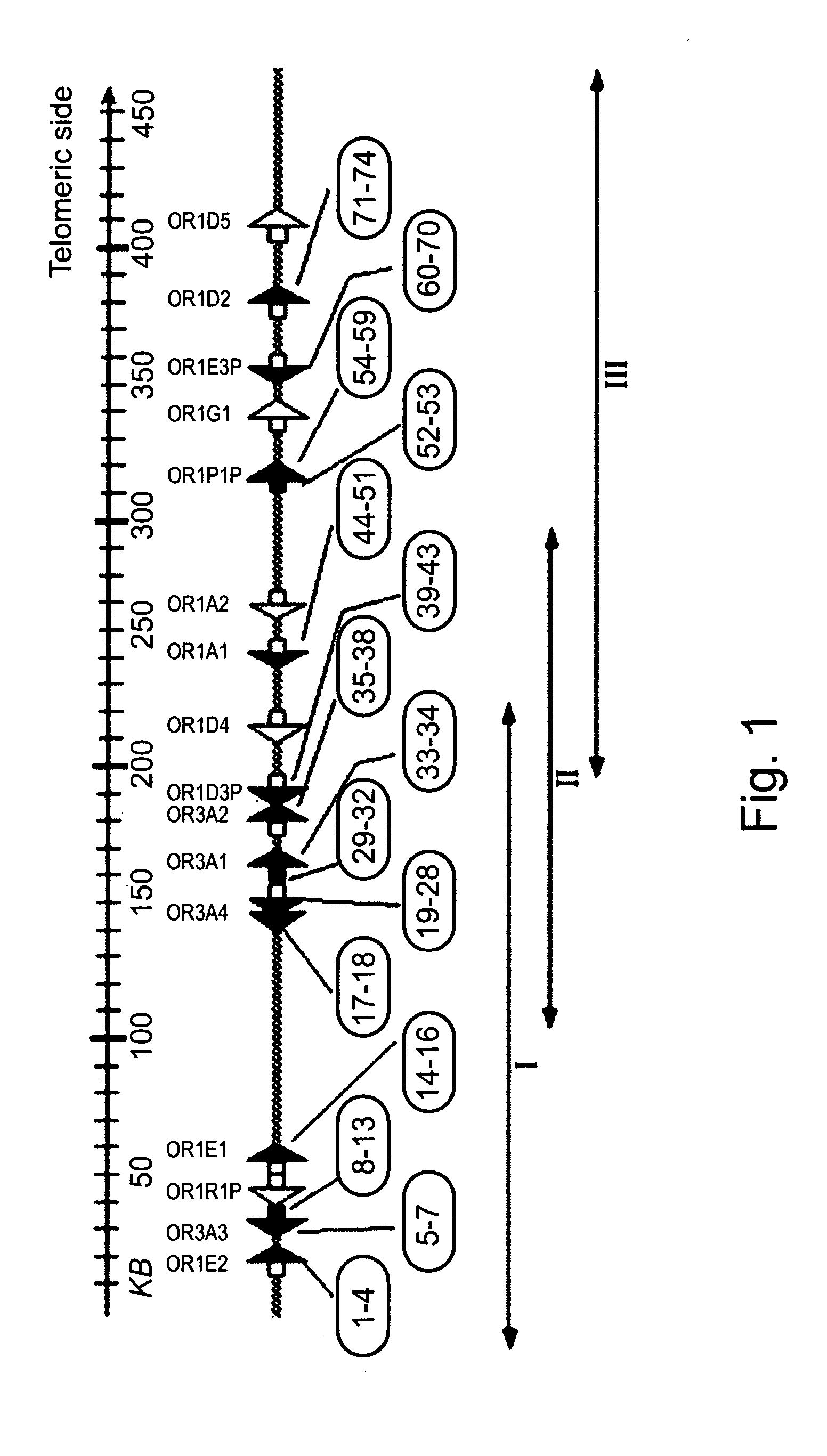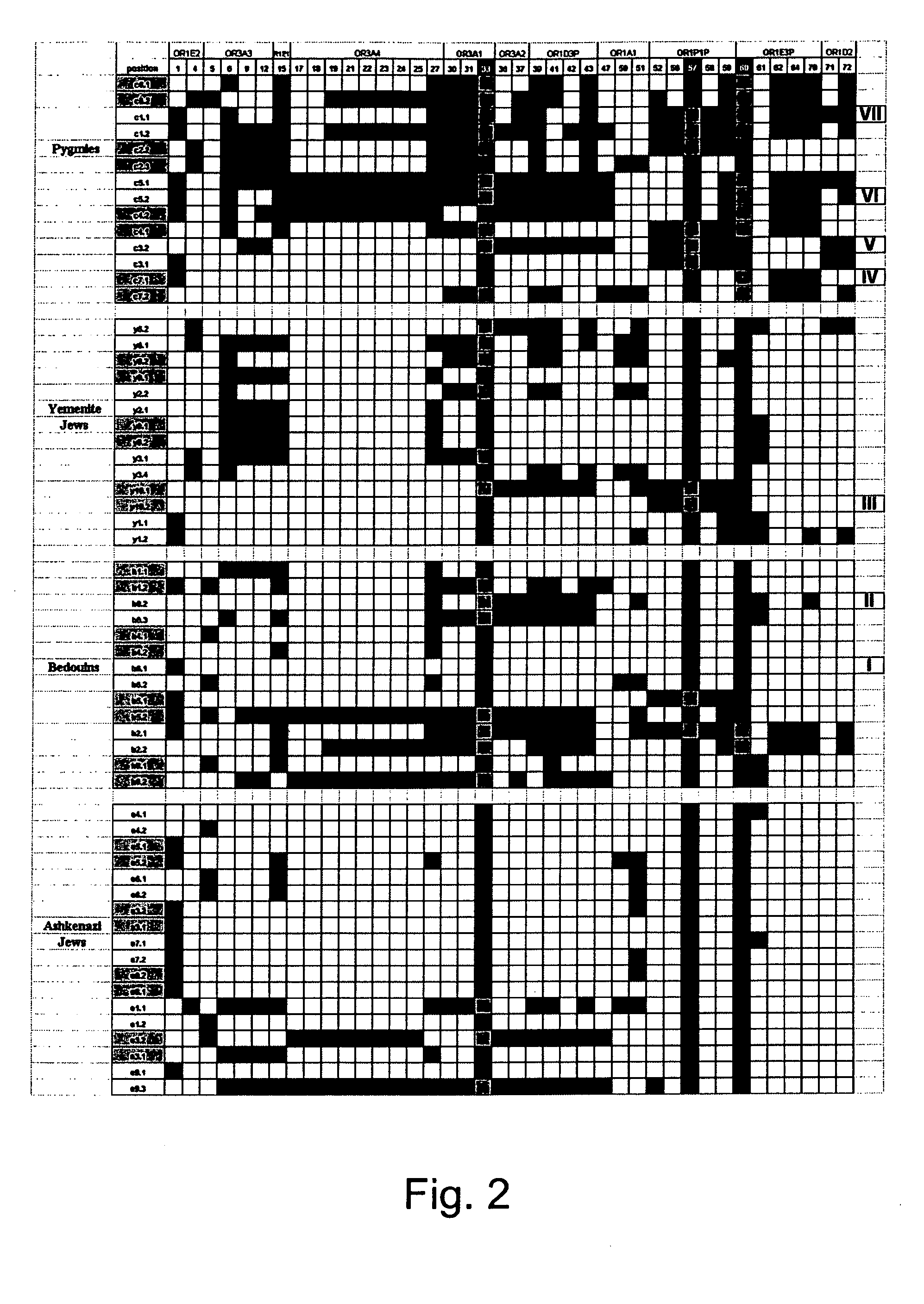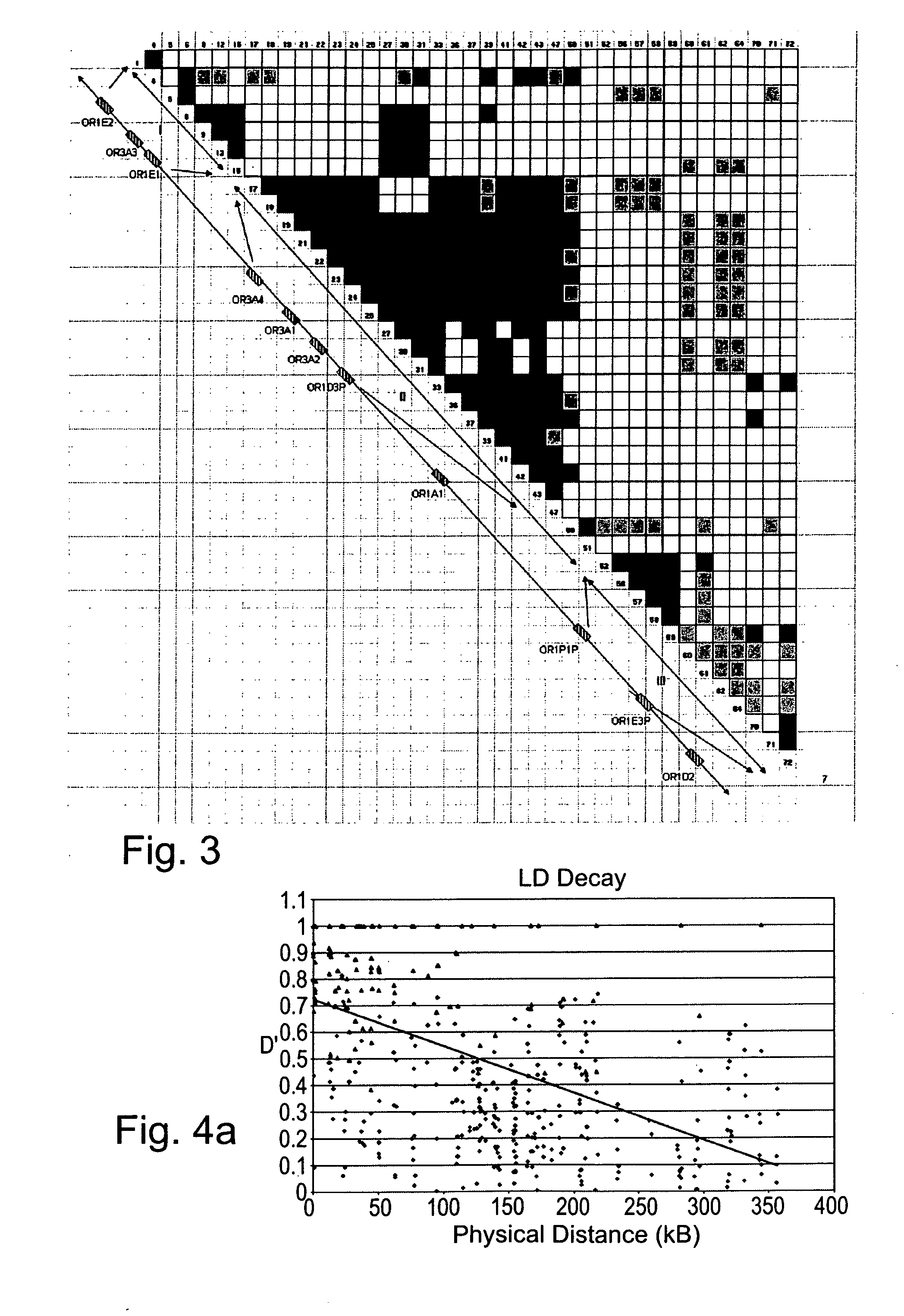Polymorphic olfactory receptor genes and arrays, kits and methods utilizing information derived therefrom for genetic typing of individuals
- Summary
- Abstract
- Description
- Claims
- Application Information
AI Technical Summary
Benefits of technology
Problems solved by technology
Method used
Image
Examples
example 1
Population—Specific Nucleotide Diversity within the Human Olfactory Receptor (OR) Gene Cluster
[0146] The olfactory receptor gene cluster on human chromosome 17p13.3 was studied using SNP analysis in four distinct ethnogeographic populations: Ashkenazi Jews, Yemenite Jews, Bedouins and Pygmies.
[0147] Experimental and Statistical Results
[0148] Identification of SNPs within the OR gene cluster—SNP scoring was performed by sequencing of 12 OR coding regions and segments within three OR introns of 35 unrelated individuals from four disparate ethnogeographic origins: 10 Ashkenazi Jews, 10 Yemenite Jews, 8 Bedouins, and 7 Pygmies. Genotyping was employed for each individual along the entire OR cluster.
[0149] A total of 74 polymorphic sites were found, of which 31 were novel (http: / / bioinfo.weizmann.ac.i1 / ˜menashe / OR17_SNPs.html). Two of the SNPs identified, in pseudogenes OR1P1P and OR1E3P segregated between the pseudogenized and intact forms. Noteworthy, the variability within the sam...
example 2
Linkage Disequilibrium along the Olfactory Receptor (OR) Gene Cluster on Chromosome 17p13.3
[0154] To calculate the level of linkage disequilibribium (LD) along the OR gene cluster within the four ethnogeographic groups the various haplotypes and recombination events were calculated.
[0155] Experimental and Statistic Results
[0156] Haplotype reconstruction—To calculate the LD, 40 polymorphic sites with intermediate frequencies (higher than 0.15) were subjected to haplotype re-construction using the Clark's algorithm as described in Methods hereinabove. Using this algorithm, 47 haplotypes from 30 individuals were successfully elucidated (FIG. 2). However, the algorithm failed to resolve the haplotypes of five individuals (14%) due to ambiguities in their genotypes. However, this un-resolved haplotype fraction is not unexpected for the sample size used (Clark, 1990). Moreover, since no excess of heterozygous genotypes was seen (http: / / bioinfo.weizmann.ac.i1 / menashe / OR17_SNPs.html) the...
example 3
[0167] Sequencing of five olfactory receptor pseudogenes revealed that three of the analyzed OR pseudogenes segregate between intact and disrupted forms.
[0168] Experimental and Statistic Results
[0169] Segregating pseudogenes in the entire sample population—The sequence analysis included five OR pseudogenes. Two of which (OR1E3P and OR1P1P) have an open reading frame interrupted at only one position and leading to a potentially inactive olfactory receptor. The coding region of OR1E3P is interrupted by a single base deletion (nucleotide coordinate 54 of SEQ ID NO: 84; see, Tables 5 and 6) that causes a frame shift and results in a premature stop codon. The coding region of OR1P1P is interrupted by a nonsense mutation (T→A at nucleotide coordinate 553 of SEQ ID NO: 85; see, Tables 5 and 6). Sequencing of 35 individuals from the four ethnogeographic groups (Pygmies, Bedouins, Yemenite Jews and Ashkenazi Jews) revealed that these two mutations in OR coding regions were polymorphic in t...
PUM
| Property | Measurement | Unit |
|---|---|---|
| Temperature | aaaaa | aaaaa |
| Fraction | aaaaa | aaaaa |
| Nucleic acid sequence | aaaaa | aaaaa |
Abstract
Description
Claims
Application Information
 Login to View More
Login to View More - R&D
- Intellectual Property
- Life Sciences
- Materials
- Tech Scout
- Unparalleled Data Quality
- Higher Quality Content
- 60% Fewer Hallucinations
Browse by: Latest US Patents, China's latest patents, Technical Efficacy Thesaurus, Application Domain, Technology Topic, Popular Technical Reports.
© 2025 PatSnap. All rights reserved.Legal|Privacy policy|Modern Slavery Act Transparency Statement|Sitemap|About US| Contact US: help@patsnap.com



